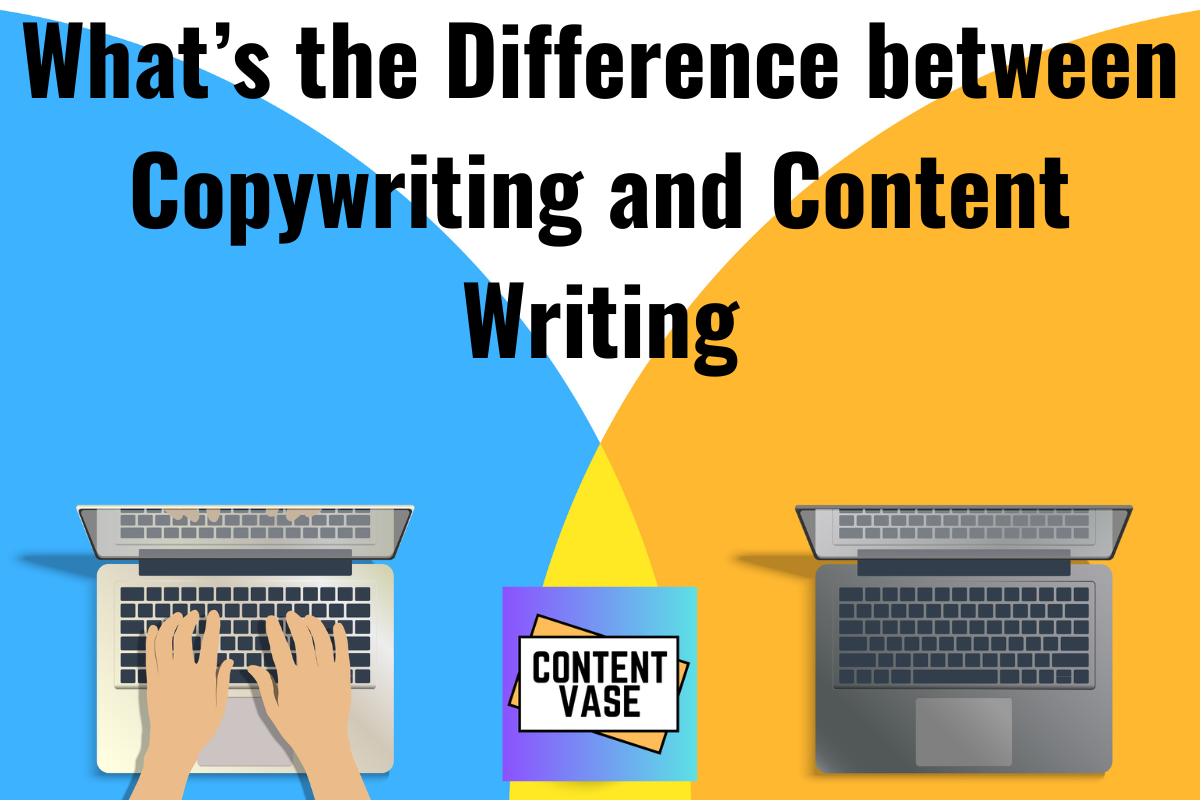Key Differences of Copywriting Vs Content Writing
In the digital age, where businesses strive to establish an online presence, the roles of copywriter and content writer have become more critical than ever. While often used interchangeably, these two fields serve distinct purposes and require different skill sets. Learning the distinctions between copywriting and content writing can empower both businesses and writers to utilize their strengths more effectively.
This blog explores the nuances that set these writing styles apart and highlights how each contributes uniquely to a company’s marketing strategy.
Copywriting: Definition and Purpose
Copywriting is used to craft persuasive text, or “copy,” intended to drive readers to take a specific action. This could be anything from making a purchase, subscribing to a newsletter (Email), or clicking on a link. The primary goal of copywriting is conversion.
Key Characteristics
- Persuasive and Action-Oriented: Copywriters use compelling language to persuade the audience to act. This involves using emotional triggers, clear calls to action (CTAs), and strategic placement of persuasive elements.
- Concise and Direct: Effective copywriting is brief and to the point. Given the short attention span of most online users, a copy needs to deliver its message quickly and clearly.
- Brand Voice Consistency: Copywriters ensure that their writing aligns with the brand’s voice and tone, maintaining consistency across all marketing materials.
- SEO-Friendly: While the primary focus is on persuasion, copywriters also incorporate SEO principles to ensure the text ranks well in search engine results, driving organic traffic.
Common Formats
- Advertisements: Both digital and print ads rely heavily on compelling copy to attract and convert potential customers.
- Landing Pages: These pages are generally created to capture leads or sales, using persuasive copy to guide visitors toward a specific action.
- Email Campaigns: Copywriters craft emails that engage recipients, promoting products, services, or content and encouraging clicks and conversions.
- Social Media Posts: Short, punchy copy is crucial, grabbing attention and boosting engagement on social media platforms.
Content Writing: Definition and Purpose
Content writing focuses on creating informative, engaging, and valuable content designed to educate or entertain the audience. The principal purpose of content writing is to build a relationship with the audience, establish credibility, and promote long-term engagement.
Key Characteristics
- Informative and Educational: Content writers aim to provide value by offering insights, knowledge, and valuable information relevant to the audience’s interests and needs.
- Engaging and Entertaining: Beyond education, content should be engaging to keep the reader interested. This involves storytelling, relatable examples, and a conversational tone.
- SEO and Keyword Integration: Content writers incorporate SEO strategies, using keywords and phrases that help improve search engine rankings and attract organic traffic.
- Depth and Detail: Unlike the concise nature of copywriting, content writing often involves a more in-depth exploration of topics, providing comprehensive coverage to satisfy the reader’s curiosity.
Common Formats
- Blog Posts: Regularly updated blogs help websites attract and retain visitors by providing fresh, relevant content.
- Articles: These can be found on various platforms, from company websites to third-party publications, offering in-depth information on specific topics.
- Ebooks and Whitepapers: Longer content forms that delve deeply into subjects, often used as lead magnets to capture email addresses and generate leads.
- Tutorials and How-To Guides: Step-by-step guides that offer practical advice and solutions, positioning the brand as an expert in its field.
Key Differences Between Copywriting and Content Writing
| Subject | Copywriting | Content Writing |
|---|---|---|
| Objective | The primary aim is to convert readers into customers or leads through persuasive techniques. | The focus is on building a relationship with the audience, providing value, and establishing authority in a particular niche. |
| Tone and Style | Typically more direct, urgent, and persuasive. It often employs emotional triggers and strong CTAs to prompt immediate action. | More informative and conversational. It aims to engage and educate the reader, often with a more relaxed and detailed approach. |
| Length and Depth | Generally shorter and more concise. The message needs to be delivered quickly to capture the reader’s attention and prompt action. | Usually longer and more detailed. It explores topics in depth to provide comprehensive information and value. |
| SEO Considerations | SEO is important but secondary to the primary goal of persuasion. Keywords are used, but the focus is on crafting compelling messages. | SEO is a significant factor, with keywords and phrases integrated naturally to improve search rankings and drive traffic. |
| Measurement of Success | Success is measured by conversion rates, such as click-through rates (CTR), sales, sign-ups, or other specific actions taken by the audience. | Success is measured by engagement metrics like page views, time on page, social shares, and overall reader interaction. |
Bridging the Gap: Integrating Copywriting and Content Writing
While copywriting and content writing serve different purposes, integrating both can create a robust content strategy that drives both immediate conversions and long-term engagement. Here’s how businesses can leverage the strengths of both –
- Content-Driven Sales Funnels: Use content writing to attract and educate potential customers. Once they are engaged, use persuasive copywriting techniques to convert them into leads or customers.
- Email Marketing: Combine informative content with a persuasive copy in email campaigns. Start with valuable content that builds trust, followed by strong CTAs that drive conversions.
- Landing Pages: Create landing pages with a mix of detailed content that educates and persuasive copy that drives action. This approach caters to both readers seeking information and those ready to convert.
- Social Media: Use engaging content to build a community and drive discussions. Complement this with promotional copy that encourages followers to take particular actions, like visiting a website or making a purchase.
Last Words
Understanding the distinctions between copywriting and content writing is crucial for businesses aiming to maximize their online presence. Copywriting, with its focus on persuasion and conversion, is essential for driving immediate actions. Content writing, on the other hand, plays a vital role in building relationships, educating the audience, and establishing authority.
By recognizing the unique strengths of each field and integrating them effectively, businesses can create a comprehensive content strategy that not only attracts and engages but also converts and retains customers. Whether you’re a business owner, a marketer, or a writer, appreciating the nuances of copywriting and content writing will empower you to communicate more effectively and achieve your marketing goals.
Frequently Asked Questions
What are the main differences between copywriting and content writing?
The main distinctions between copywriting and content writing are in their goals and writing styles. Copywriting is persuasive and focused on driving conversions, whereas content writing is informative and aims to educate or entertain the audience. Copywriting is usually short and direct, while content writing can be longer and more detailed.
Which skills are essential for a copywriter?
Essential skills for a copywriter include an understanding of marketing principles, the ability to write persuasively, creativity, a strong command of the language, knowledge of SEO, and the ability to write compelling headlines and calls to action.
Which skills are essential for a content writer?
Essential skills for a content writer include strong research abilities, excellent writing and grammar, an understanding of SEO, the ability to write in various tones and styles, and the ability to produce engaging and informative content.
Can one person be both a copywriter and a content writer?
Yes, many writers possess skills in both areas and can switch between copywriting and content writing depending on the needs of the project. However, some may specialize in one discipline over the other.
How does SEO play a role in copywriting and content writing?
SEO is vital in both fields. In copywriting, SEO helps ensure that persuasive content effectively reaches the target audience. In content writing, SEO is crucial for improving the visibility and ranking of informative content on search engines.
What industries use copywriters and content writers?
Both copywriters and content writers are used across various industries, including marketing, advertising, eCommerce, technology, healthcare, finance, and many others.
How do copywriters and content writers collaborate with other teams?
Both copywriters and content writers often collaborate with marketing teams, SEO specialists, social media managers, and website designers to make sure that the content matches the overall marketing strategy and brand messaging.
What are common formats for copywriting?
Common formats for copywriting include advertisements, landing pages, email campaigns, product descriptions, sales letters, and social media ads.
What are common formats for content writing?
Common formats for content writing include blog posts, articles, whitepapers, eBooks, newsletters, social media posts, and website content.
How is the success of copywriting measured?
The success of copywriting is typically measured by conversion rates, click-through rates (CTR), sales, lead generation, and overall return on investment (ROI).
How do you measure the success of content writing?
The success of content writing is usually measured by metrics such as website traffic, engagement rates (likes, comments, shares), page time spent, social shares, and improvements in search engine rankings.
What to consider when hiring a copywriter or content writer?
When hiring, consider the writer’s portfolio, understanding of your industry, writing style, ability to meet deadlines, knowledge of SEO, and ability to understand and meet your specific goals.
Share this blog on the following social media platforms so that more people can benefit.
Other Blogs




